By IAN FAILES
By IAN FAILES
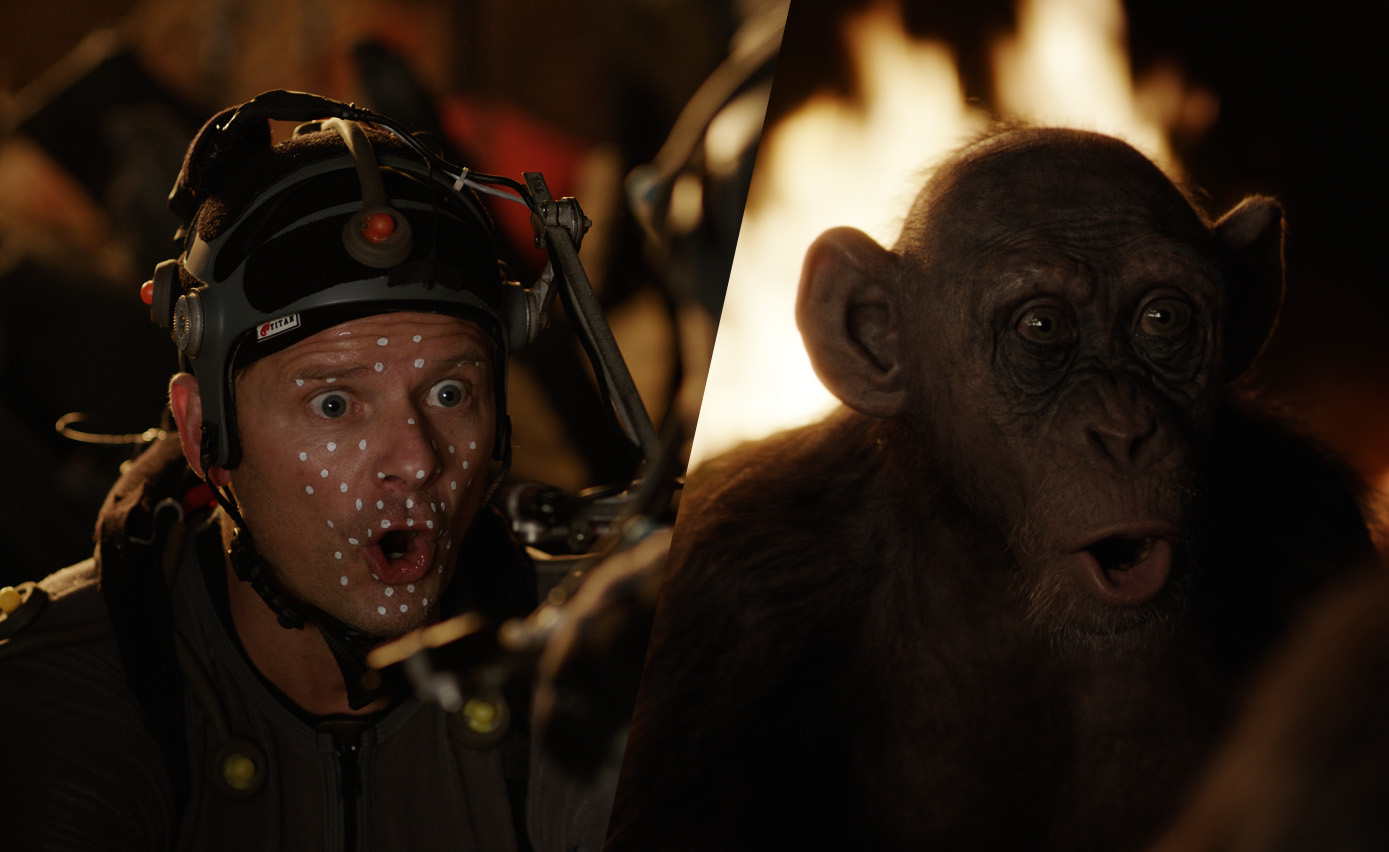
Steve Zahn as Bad Ape in Twentieth Century Fox’s “War for the Planet of the Apes.”
Over the past two Planet of the Apes films, Weta Digital has constantly refined its approach to performance capture – aided greatly by the efforts of actors such as Andy Serkis – and the way it has realized living, breathing CG primates. With War for the Planet of the Apes, the visual effects studio continues to cross new boundaries in digital creatures, and this time around faced several fresh challenges.
“Meeting Bad Ape for the first time was really exciting for all of the animation team. Seeing Steve (Zahn’s) performance, I was quite confident that he was going to be quite something, and I think that he is. There’s a great deal of levity that he brings with him. He’s also not one-dimensional. He carries a lot of sadness with him, but has this outlook on life that buoys our heroes as well as the audience.”
— Dan Barrett, Animation Supervisor
One new challenge was the introduction of Bad Ape, played by Steve Zahn, a chimpanzee who ape leader Caesar (Serkis) discovers and chooses to lead an expedition to a local military camp. VFX Voice paid a visit to Weta Digital in Wellington, New Zealand to find out more about how Bad Ape was brought to life.
In crafting Bad Ape, Weta Digital had to slightly re-think its primate designs. That’s because the character had a particular look, as Visual Effects Supervisor Dan Lemmon explains: “He was based on a juvenile ape, but we wanted to make him look old and kind of wizened. So we blended visual cues that would tell you that he was old with an anatomy that’s actually a lot closer to an adolescent chimpanzee.
“The ranges of Bad Ape worked pretty well with what Steve was doing right from the start, so we didn’t find that need of adding more human characteristics onto it. The body language and everything came through in a way that it was very loyal to Steve Zahn already, but was still its very own CG character.”
— Alessandro Bonora, Facial Models Lead
“He had such a unique kind of face as well,” adds Lemmon. “It’s an innocent but tired, worn visage. And that meant we actually didn’t put a whole lot of Steve back into Bad Ape. A little bit in his eyes, but for the most part it was a lot more about how he moved and what his facial expressions were – following the changes that he would make – but less so than we would have done with Andy and Caesar.”
Like the other Apes characters that would be CG, Zahn performed on set wearing a motion-capture suit and facial-capture set-up. Weta Digital’s signature approach to animation enables the resulting performance-capture data to inform the animators in crafting a final performance, allowing them to take as much of the original mocap as they need.
“He was based on a juvenile ape, but we wanted to make him look old and kind of wizened. So we blended visual cues that would tell you that he was old with an anatomy that’s actually a lot closer to an adolescent chimpanzee.”
— Dan Lemmon, Visual Effects Supervisor
With his particular character traits, animators at the studio clamored to work on Bad Ape. “Meeting Bad Ape for the first time was really exciting for all of the animation team,” says Animation Supervisor Dan Barrett. “Seeing Steve’s performance, I was quite confident that he was going to be quite something, and I think that he is. There’s a great deal of levity that he brings with him.
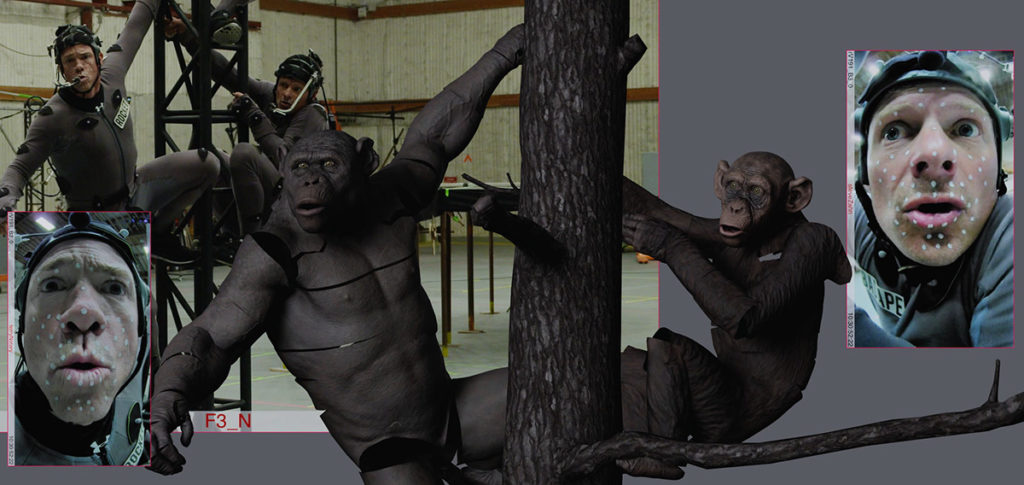
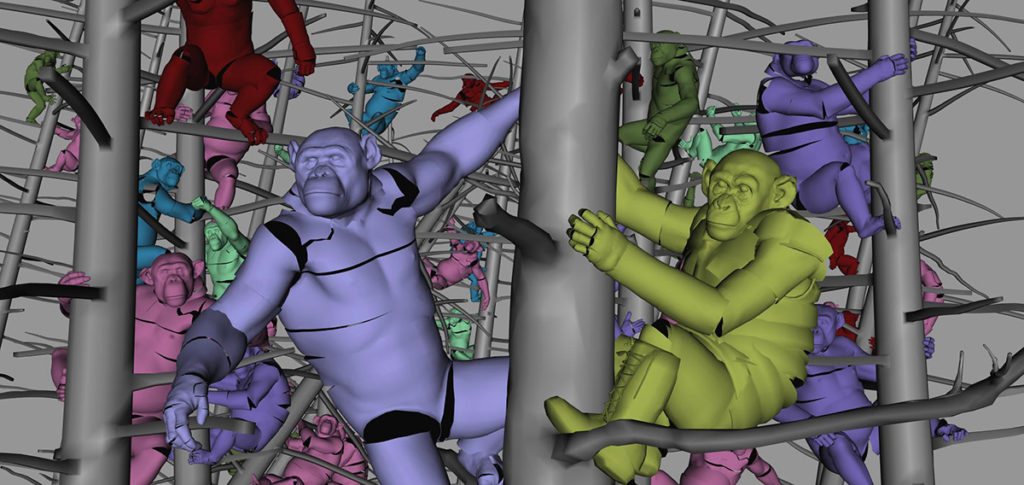
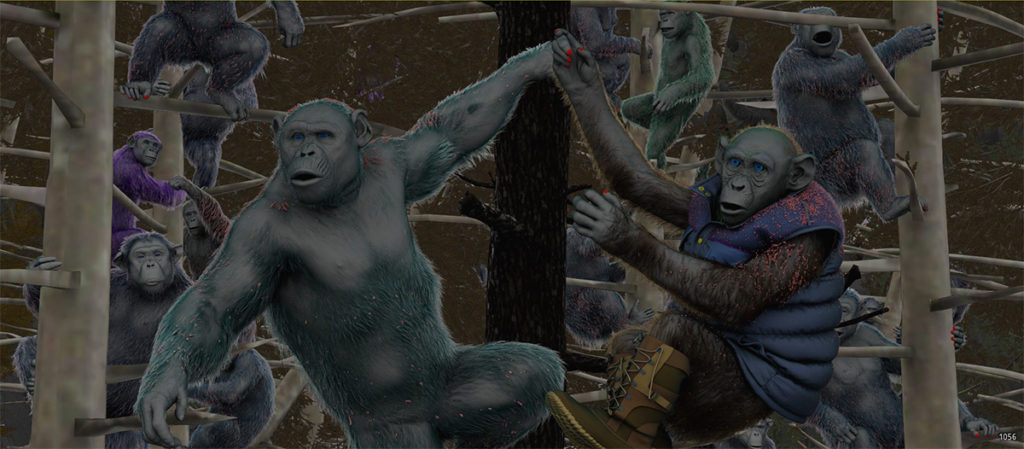
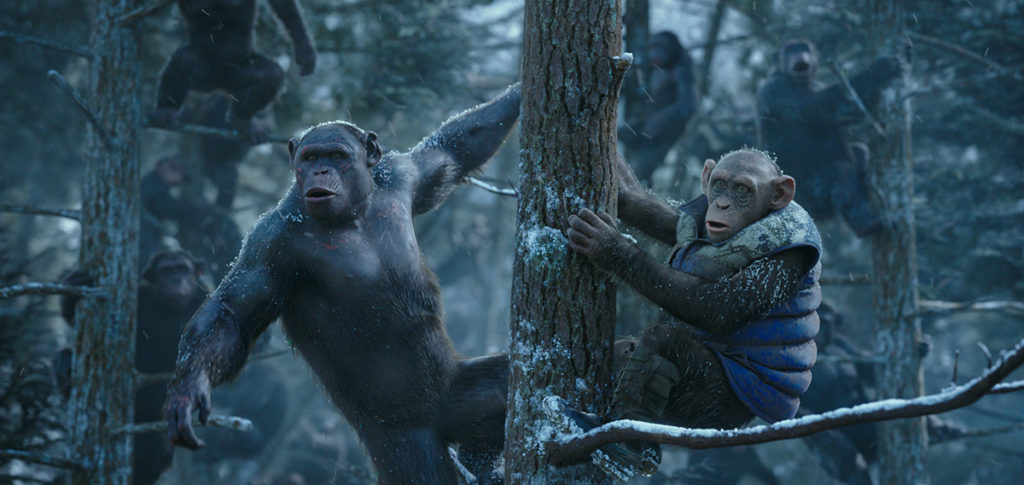
He’s also not one-dimensional. He carries a lot of sadness with him, but has this outlook on life that buoys our heroes as well as the audience.
“He’s this beautiful little guy who can generally see the positive in everything,” continues Barrett. “Amid all of the snow, the cold, the war and destruction, to have a guy like this at the center of it all, I think it’s magnificent for the film. It was just something that all the team responded to, and everybody wanted a little bit of Bad Ape.”
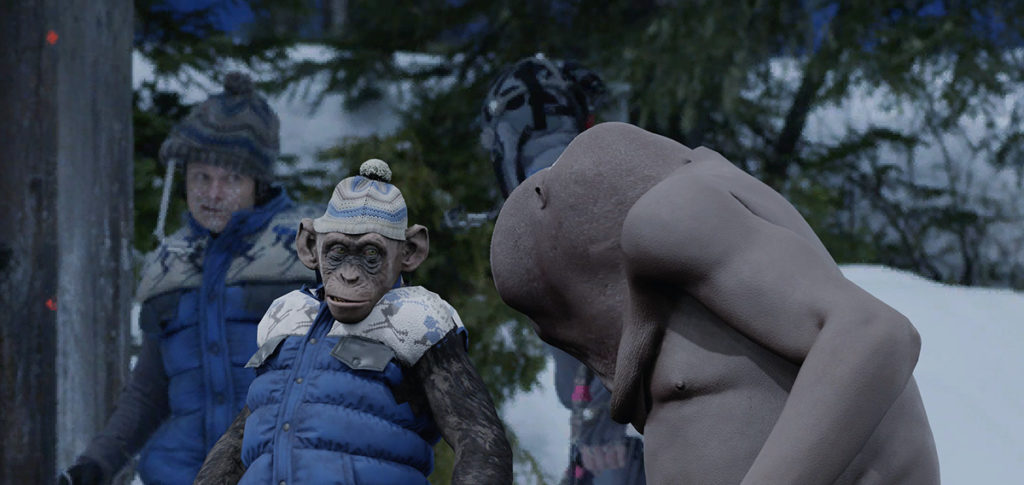
How Steve Zahn played Bad Ape on set.
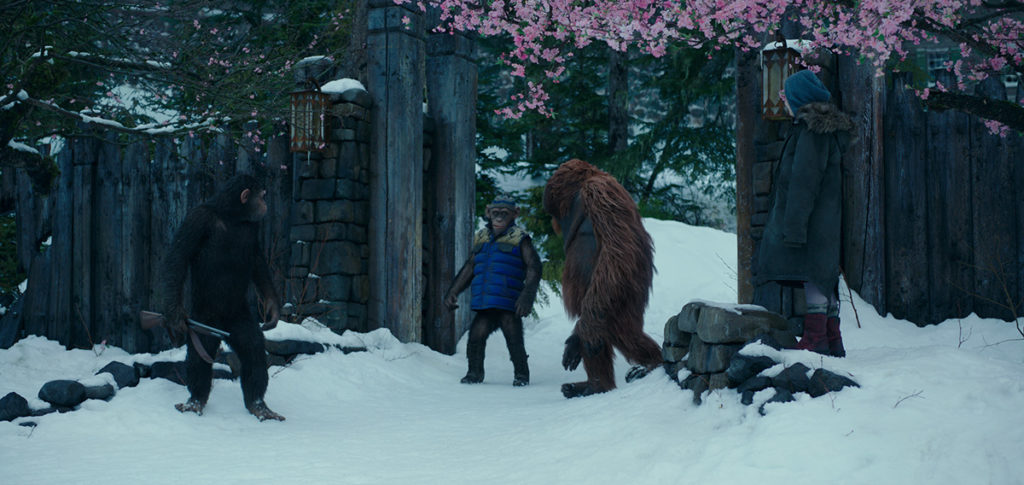
The Final Shot.
Along with its tried and tested approach to performance capture and keyframe animation, Weta Digital also relied on its well-established facial-modeling approach in order to make Bad Ape. The studio works from the inside out, building physically plausible under-skeletons, muscle and skin systems and animation controls. Its FACETS system, which works out how facial-capture data can be translated to the underlying muscles of the face, and re-targeted to a CG character, was also crucial.
“He’s this beautiful little guy who can generally see the positive in everything. Amid all of the snow, the cold, the war and destruction, to have a guy like this at the center of it all, I think it’s magnificent for the film. It was just something that all the team responded to, and everybody wanted a little bit of Bad Ape.”
— Dan Barrett, Animation Supervisor
Facial models lead Alessandro Bonora says Bad Ape’s CG model was adapted to be more ‘chimpy’ – something Zahn was also bringing to the character. “The ranges of Bad Ape worked pretty well with what Steve was doing right from the start,” notes Bonora, “so we didn’t find that need of adding more human characteristics onto it. The body language and everything came through in a way that it was very loyal to Steve Zahn already, but was still its very own CG character.”